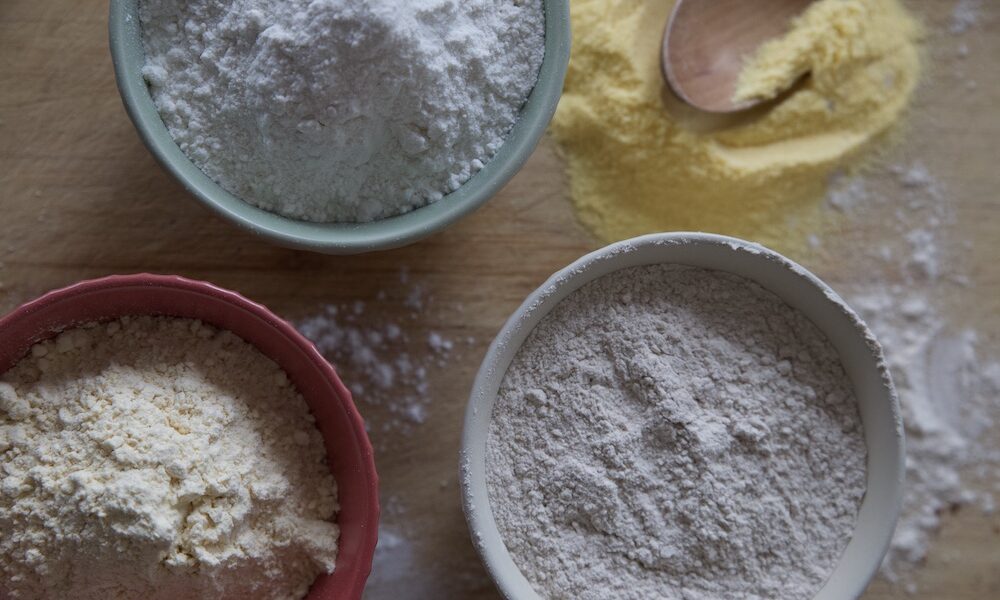In this article, we delve into what we think are the 4 best types of Gluten-free flour because we know that choosing gluten-free flour can be challenging.
The choice is wide, and knowing the characteristics of the gluten-free flour we are using is key.
Gluten is the protein that holds everything together in regular flour. Gluten is made of two proteins: gliadin and glutenin. The two proteins interchain and form a rather stable tridimensionality structure that can hold the finest cake and the crustiest sourdough.
Gluten allows for fluffiness and structure. So, the million-dollar question is how we replace such a structure and recreate the many properties that gluten has using a flour that does not contain gluten?
A cake made with wheat flour can be very airy and light and hold high, and no gluten-free flour has the same properties in one product. So, the most efficient way of working with gluten-free flour is to combine various gluten-free flours to achieve a perfect result.
Here is a list of what we at gluten-free.net think are the 4 best types of gluten-free flour.
Nut flour
Nut flours are naturally high in protein and good fats, great for rise and structure. If you are up for a fibre boost, opt for a skin-on nut flour. The most used nut flour is certainly almond flour, which is great for that airy cake texture like in our famously delicious orange cake.
Many other nut flours, like pistachio and hazelnut, are used in cooking. They add character to any recipe. Ground pistachio, for example, is a great addition to macaroons.
Starches
Starches are a key gluten-free flour category often combined with nut flour. They are pure carbohydrates that contribute to a light texture and often have binding properties, which help increase the viscosity of a sauce or custard.
Corn-starch, potato starch, tapioca and arrowroot add lightness to any recipe. Polenta flour or cornmeal belongs to the same category but has slightly different properties. It usually gives great consistency and nutty flavour to any recipe, like in our cornmeal bread.
Wheat-like flours
As per their name, wheat-like flours are obtained by grinding ingredients that resemble cereal but are not cereal and don’t contain gluten. These flours are great for rise and structure because they are usually protein-rich.
Common examples are buckwheat, oats (oats contain a protein called avenin very similar to gluten), quinoa, and sorghum flours. We often use a combination of these flours, like in our decadent chocolate cake that is to die for.
Often oats are produced in factories that handle wheat. It is important to read the label carefully in case of possible contamination.
Pulses flour
One of the most used and popular pulse or dry bean flour is certainly chickpea flour.
Chickpea flour comes with an intense flavour which may not be everyone’s cup of tea. It can sometimes compromise the taste of the recipe. A good trick to reduce the flavour is to toast the flour or to combine it with an intense aroma like rosemary, as we’ve seen in our pizza made with chickpea flour.
Another pulse commonly used in its flour form is lentils, which we use to make some delicious tortillas.


